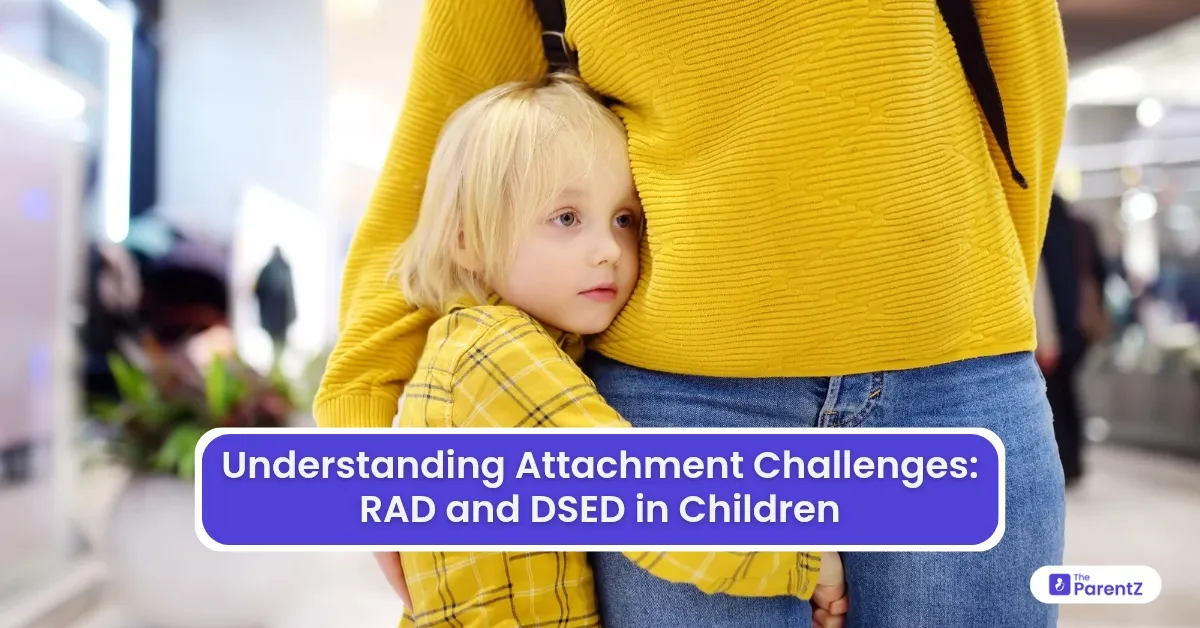As a dentist, I’ve had the privilege of working closely with children in various settings, where I observe not only their dental health but also their emotional well-being. It’s not uncommon for a child to exhibit signs of discomfort or fear in the dental chair, which often comes from anxiety or lack of trust. However, there are instances when a child’s lack of trust or attachment goes far beyond the typical responses to unfamiliar situations. This issue can point to deeper emotional struggles, particularly attachment challenges such as Reactive Attachment Disorder (RAD) and Disinhibited Social Engagement Disorder (DSED). These disorders can deeply affect a child’s ability to form secure, trusting relationships and can have a lasting impact on their emotional and psychological health.
As a professional, I’ve seen how crucial early intervention and support are for children struggling with attachment issues. Understanding RAD and DSED, the signs, and the necessary strategies for support is key to helping these children thrive emotionally and socially.
What is RAD and DSED?
Both Reactive Attachment Disorder (RAD) and Disinhibited Social Engagement Disorder (DSED) are serious conditions that affect the way children interact with caregivers and others in their environment. They typically develop due to early trauma, neglect, or inconsistent caregiving during the critical early years of development.
- Reactive Attachment Disorder (RAD): RAD is a condition where a child has difficulty forming healthy emotional bonds with caregivers, often as a result of severe neglect, abuse, or inconsistent caregiving. Children with RAD may display a lack of trust, an inability to form secure attachments, and may even show a lack of interest in seeking comfort from caregivers. These children often struggle with emotional regulation, which can manifest in severe withdrawal, sadness, or emotional outbursts.
- Disinhibited Social Engagement Disorder (DSED): In contrast, DSED involves the opposite extreme: children with this disorder exhibit overly familiar behaviours with strangers or unfamiliar adults. They may approach, interact with, or seek comfort from people they don’t know, without showing any caution or awareness of potential danger. This behavior is often seen in children who have experienced neglect or inconsistent caregiving, but is less focused on emotional withdrawal and more on inappropriate social behaviors.
The Causes of RAD and DSED
Both RAD and DSED are rooted in early experiences of neglect, abuse, or inconsistent caregiving. These conditions often develop during the formative years when a child’s brain is still developing the capacity to form attachments and trust others. Some common causes include:
- Early Childhood Neglect or Abuse: Children who experience chronic neglect or physical and emotional abuse in the early years may not develop healthy attachment patterns. This can lead to issues with emotional regulation and trust, which are central to both RAD and DSED.
- Inconsistent Caregiving: Children who grow up with caregivers who are inconsistent in their emotional availability or responsiveness may struggle to form secure attachments. This lack of stability can confuse the child’s ability to understand how to rely on others for safety and comfort.
- Frequent Changes in Caregivers: Frequent disruptions in caregiving, such as children being placed in foster care or being raised in environments with multiple caregivers, can prevent children from forming stable, lasting attachments. This can result in the development of either RAD or DSED, depending on the child’s individual temperament and experiences.
- Trauma and Separation: Experiencing significant trauma, especially early in life, or being separated from a primary caregiver for extended periods, can also contribute to attachment difficulties. Children may not have the opportunity to form secure bonds and may develop either an avoidant or disinhibited attachment style as a response.
Signs and Symptoms of RAD and DSED
Recognizing the signs of RAD and DSED is crucial for early intervention. Although both conditions stem from attachment issues, their manifestations differ significantly.
1. Signs of Reactive Attachment Disorder (RAD):
- Withdrawal or Lack of Emotional Response: Children with RAD may seem emotionally distant or detached. They may not seek comfort when upset, avoid eye contact, or appear indifferent to social interactions.
- Avoidance of Caregivers: These children may avoid or even reject attempts to be comforted by caregivers. This behavior can make bonding or comforting very difficult.
- Difficulty Regulating Emotions: Children with RAD often experience emotional outbursts, including anger, frustration, and sadness, but may not have the ability to understand or manage these emotions appropriately.
- Fear of Relationships: RAD can make it difficult for children to trust adults, resulting in an aversion to forming close, trusting relationships. They may act out in ways that push others away as a defense mechanism.
2. Signs of Disinhibited Social Engagement Disorder (DSED):
- Overly Familiar Behavior with Strangers: Children with DSED may engage with unfamiliar people inappropriately, approaching them too quickly, without hesitation or regard for personal boundaries. They might behave in ways that are out of place, such as hugging strangers or sitting on their laps.
- Lack of Caution: Unlike most children, those with DSED don’t exhibit fear or caution around strangers. They may not recognize or respond appropriately to social cues, such as not recognizing when someone might be a potential threat.
- Seeking Attention from Multiple Caregivers: Children with DSED may demonstrate a desire to engage with any adult who shows them attention, lacking discrimination or preference for familiar caregivers over strangers.
- Difficulty Bonding with Primary Caregivers: These children may show little attachment to their primary caregivers, instead seeking comfort from anyone willing to provide it, which is a sign of emotional instability.
Treatment and Support for Children with RAD and DSED
When children show signs of attachment difficulties like RAD and DSED, early intervention is essential. Support can come in the form of therapy, structured parenting techniques, and environmental changes that foster attachment security.
1. Therapy and Counselling:
- Trauma-Focused Cognitive Behavioral Therapy (TF-CBT): This therapeutic approach helps children process traumatic events and learn healthier emotional regulation and coping strategies. TF-CBT focuses on addressing the underlying trauma that contributes to attachment disorders.
- Attachment-Based Therapy: This form of therapy focuses on helping children and caregivers build or rebuild trust, improve emotional regulation, and foster secure attachments. It’s especially helpful for children with RAD.
2. Parenting Strategies:
- Consistency and Predictability: Caregivers should be consistent in their behavior, offering stable routines and predictable responses to the child’s needs. This can help create a safe environment where children can learn to trust and depend on others.
- Building Emotional Awareness: Teaching children to identify and express their emotions in a safe space can help them develop better emotional regulation and a sense of security in their relationships.
3. Social Skills Training: Children with RAD or DSED often need help developing appropriate social behaviors. This can be done through role-playing, peer interactions, and social skills training that helps them navigate interpersonal relationships in healthy ways.
4. Fostering Secure Attachment: For children with RAD, caregivers must focus on building secure, positive relationships by offering comfort and safety in response to the child’s emotional needs. For children with DSED, caregivers should encourage cautiousness and appropriate boundaries with strangers to help the child develop healthy attachment behaviors.
Conclusion
Children experiencing attachment difficulties, whether through RAD or DSED, face unique challenges that can affect their emotional, social, and cognitive development. As parents, caregivers, or educators, it is vital to recognize the signs of these disorders early on and seek appropriate interventions. Through therapy, consistent caregiving, and supportive environments, children can begin to heal from the trauma or neglect that has shaped their attachment patterns. Understanding these disorders and providing the right support is the first step toward helping these children develop the emotional resilience and secure attachments they need to thrive in the world.








Be the first one to comment on this story.